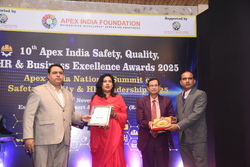Role of Transport Sector in Delhi’s Air Pollution
Invisible Exhaust, Visible Impact: How Delhi’s Roads Are Choking Its Air and Public Health

Delhi-NCR continues to grapple with dangerous levels of air pollution throughout the year—most acutely in the winter months. While multiple sources contribute to this environmental crisis, the transport sector remains one of the most significant yet often underestimated culprits. Vehicular emissions, in particular, represent both a major source of pollution and an area ripe for intervention, especially in the context of rapid urbanisation.
Transport Emissions: A Persistent Threat
In Delhi, the transport sector is a dominant contributor to ambient air pollution. Studies estimate that vehicular emissions account for anywhere between 40% to 80% of the total pollution, depending on location, fuel type, vehicle age, and road congestion. Heavy reliance on road-based transport and outdated vehicles further aggravates the problem.
According to Kaustubh Chuke, Senior Program Manager, Clean Air at WRI India, the public transport share in Delhi has now fallen below 50%, even as the number of daily trips continues to increase. With Delhi housing nearly 24 million people, and the wider NCR home to almost 40 million, even one daily trip per person results in a massive volume of transport activity—leading to high emissions and worsening air quality.
An Issue of Inequity
As Chetan Bhattacharji, Senior Journalist, points out, “Air pollution is not just an environmental issue—it’s an issue of equity.” A CAQM report showed that 7 out of 10 people in Delhi rely on public transport, cycling, or walking, while only 3 out of 10 use private vehicles. Ironically, it is the least polluting majority that faces the highest exposure to vehicular emissions, especially on congested roads with minimal protection.
Interstate Flow and Commercial Vehicles
The burden on Delhi’s air is not solely local. A substantial share of vehicular emissions originates from outside the city. Nearly one-third of vehicles on Delhi roads are from neighboring states. Among commercial vehicles, only one-fourth have Delhi registration, with the remainder primarily from Uttar Pradesh and Haryana. Despite their lower numbers, these vehicles account for:
- 79% of NOx
- 40% of carbon monoxide (CO)
- 30–40% of particulate matter (PM)
This disparity highlights the urgent need to prioritize control over commercial and long-haul vehicles, especially those using outdated emission standards.
Solutions and Interventions
- Low Emission Zones (LEZs)
Designating Low-Emission Zones can significantly reduce pollution in localized areas. The pedestrianization of Chandni Chowk—once notorious for congestion—is a successful case study. Today, it offers a cleaner, safer, and more enjoyable environment for pedestrians, setting an example for other parts of Delhi.
Modal Shift to Non-Motorised and Public Transport
Urban planning must actively promote walking and cycling, especially for short-distance commutes. Ensuring safety and infrastructure for pedestrians and cyclists will encourage a modal shift, reducing dependency on motor vehicles.
Fleet Modernisation and Emissions Regulation
According to Sunil Dahiya, Founder of Enviro Catalysts, phasing out older vehicles, particularly BS-II and BS-III, can lead to significant emissions reductions. Transitioning to BS-VI or electric vehicles can cut pollution by up to 80%. Delaying such interventions, Dahiya warns, “not only harms public health but also has deep economic consequences.”
The Hidden Health Costs
Dr. Harshal Salve, Additional Professor at AIIMS, frames the impact of air pollution as a health triangle:
Apex: Deaths due to pollution—visible but relatively few.
Base: The massive, invisible burden—chronic diseases like asthma, cardiovascular conditions, hypertension, diabetes, and even neurological disorders are all linked to prolonged exposure to polluted air.
The Way Forward
Combating Delhi’s air pollution crisis requires a multi-pronged, systemic approach:
- Interstate coordination on vehicle flows and emission standards
- Effective urban governance and clear accountability frameworks
- Promotion of electric and clean fuel vehicles
- Increased public transport investments and incentives
- Awareness campaigns to shift public behavior
Delhi’s pollution battle is not unwinnable—but the transport sector must be placed front and center in the action plan.
The writer of this article is Dr. Seema Javed, an environmentalist & a communications professional in the field of climate and energy




